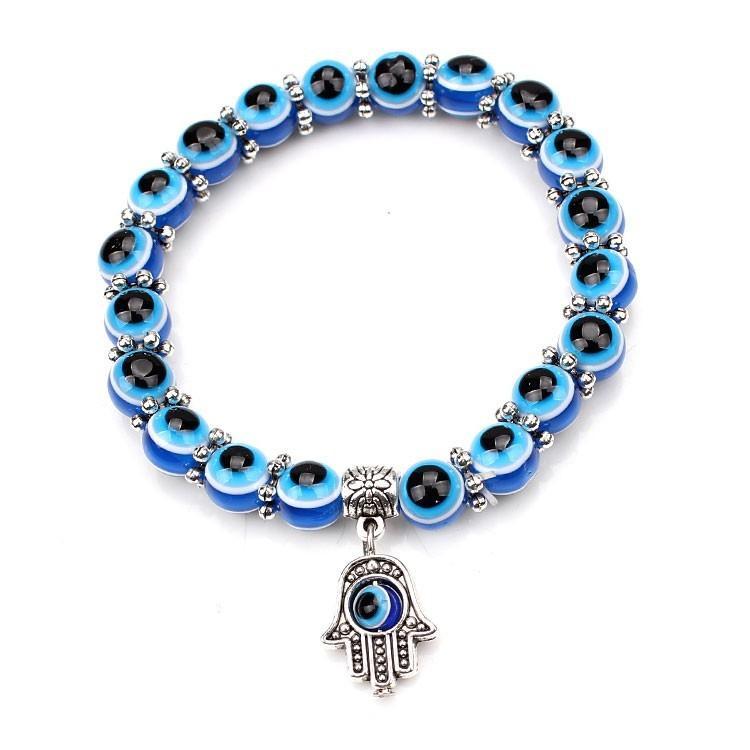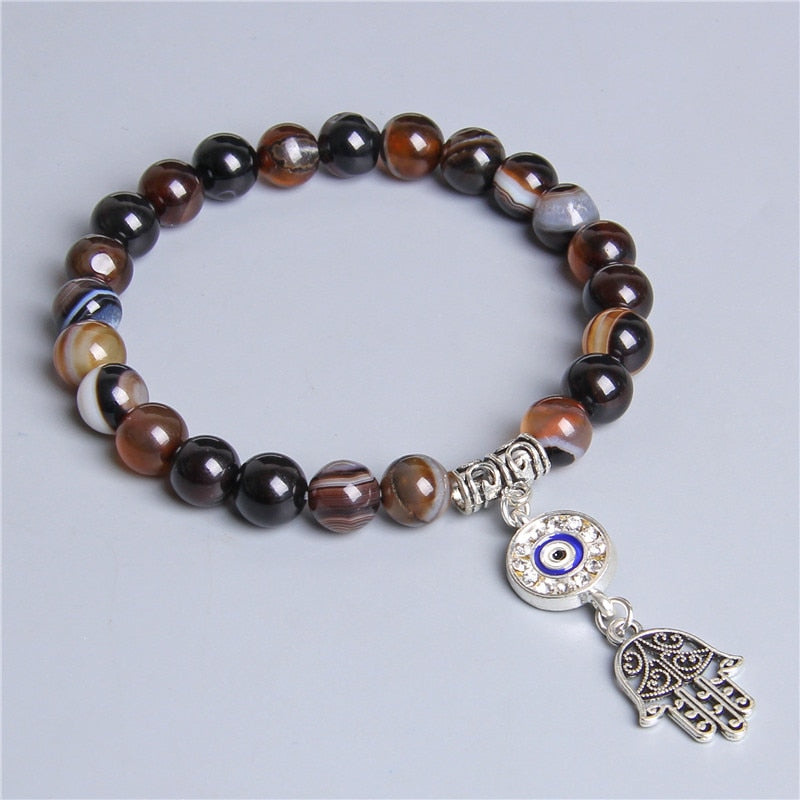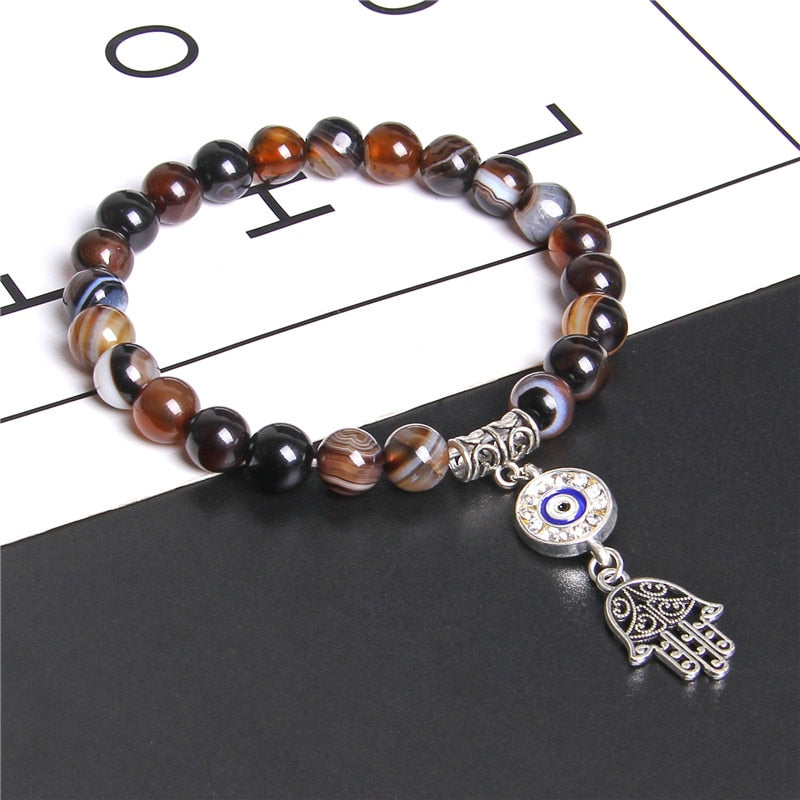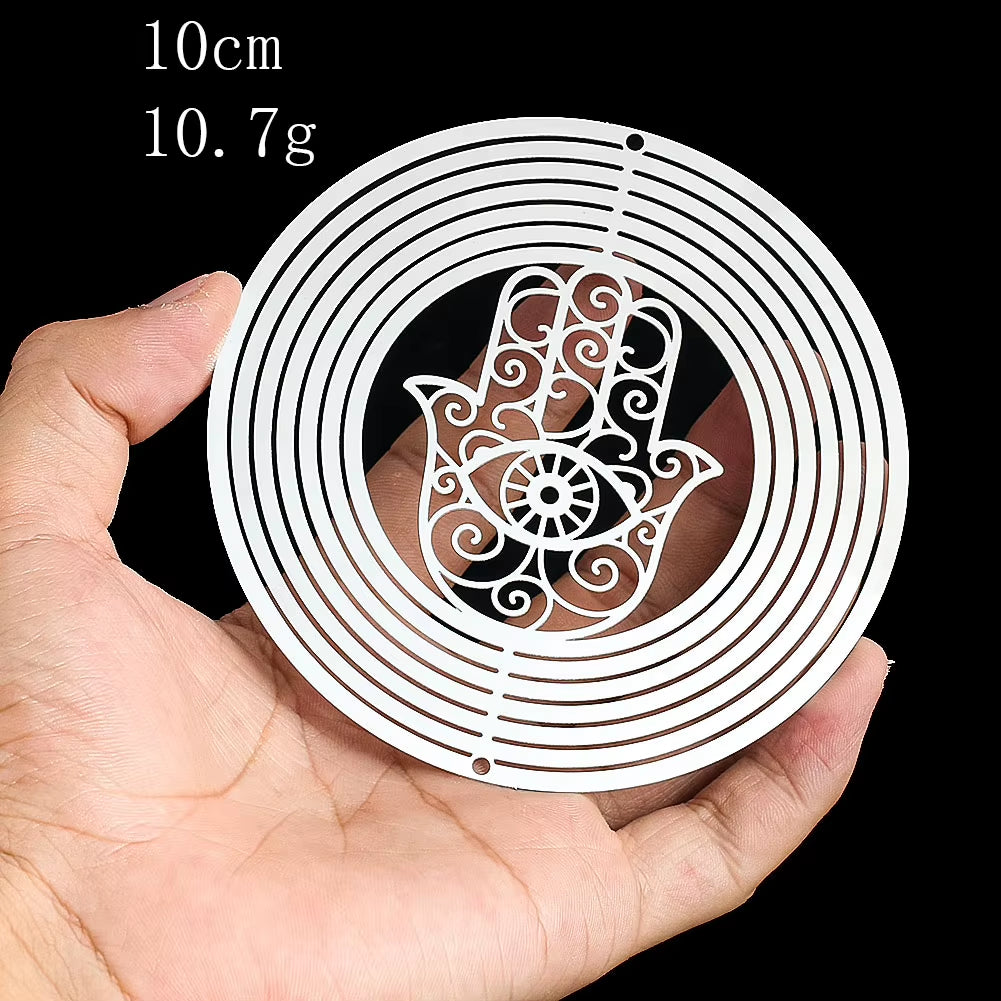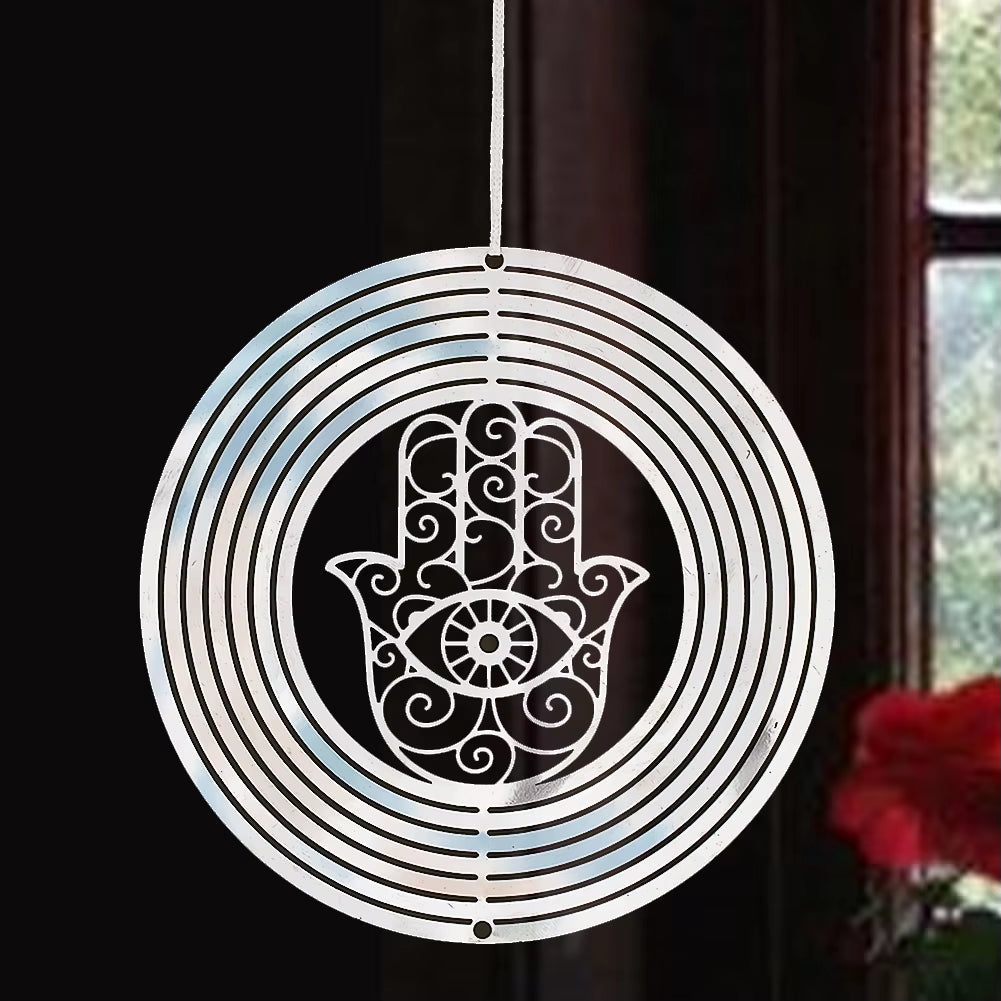Der Reiz antiker Symbole liegt oft in ihrem geheimnisvollen Ursprung und ihrer kraftvollen Bedeutung, die sie über Kulturen und Jahrhunderte hinweg in sich tragen. Unter diesen kraftvollen Symbolen stechen die Hamsa-Hand und die Hand der Fatima hervor, die häufig für ihre Schönheit bewundert und wegen ihrer schützenden Eigenschaften gesucht werden. Wenn Sie sich für spirituelle Symbolik, ganzheitliches Wohlbefinden oder sakrale Kunst interessieren, sind Sie diesen faszinierenden handförmigen Amuletten wahrscheinlich schon begegnet. Dieser Artikel befasst sich mit der komplexen Verbindung zwischen der Hand der Fatima und der Hamsa und erforscht ihre gemeinsame Geschichte, ihre unterschiedlichen kulturellen Interpretationen und ihre anhaltende spirituelle Bedeutung. Sie werden die reiche Vielfalt an Glaubensvorstellungen entdecken, die in diese Symbole eingewoben sind, und verstehen, warum sie weiterhin zur persönlichen Stärkung und Energiereinigung geschätzt werden.
Enthüllung der Hamsa-Hand und der Hand der Fatima
Auf den ersten Blick ähneln sich die Hamsa-Hand und die Hand der Fatima verblüffend – eine offene rechte Hand, oft mit einem Auge in der Handfläche. Beide gelten weithin als Symbole für Schutz, Segen und Stärke . Die Hamsa ist ein universelles Motiv, das in verschiedenen Kulturen und Religionen vorkommt und vielen modernen Glaubensrichtungen vorausgeht. Die Hand der Fatima, die optisch fast identisch ist, hat in der islamischen Tradition spezifische Konnotationen und ist nach Fatima Zahra, der Tochter des Propheten Mohammed, benannt. Um ihre Nuancen zu verstehen, muss man zunächst ihre individuellen Geschichten und die kulturellen Strömungen erkunden, die sie geprägt haben.
Gemeinsame Wurzeln und antike Ursprünge
Das Motiv der offenen rechten Hand als Schutzsymbol ist nicht auf eine einzelne Kultur beschränkt, sondern hat antike Ursprünge, die bis nach Mesopotamien (mit der Hand der Ischtar/Inanna) und ins alte Ägypten zurückreichen. Auch in den phönizischen und karthagischen Traditionen spielte es als Hand der Tanit, Symbol einer Hauptgöttin, eine wichtige Rolle. Diese antike Herkunft deutet auf ein tief verwurzeltes menschliches Verständnis der Hand als Machtkanal und Abwehr gegen das Böse hin. Die Hamsa-Hand der Fatima schöpft daher aus einer reichen Quelle vorislamischer und vorjüdischer Glaubensvorstellungen, die den Nahen Osten und Nordafrika durchdrangen. Im Laufe der Jahrtausende wurde dieses wirkungsvolle Symbol im Zuge der Interaktion der Kulturen übernommen und angepasst, was zu seiner heutigen weiten Anerkennung geführt hat. Sein Weg durch die Geschichte unterstreicht das allgemeine menschliche Verlangen nach Schutz und göttlicher Gunst.

Hauptunterschiede: Symbolik und kulturelle Nuancen
Obwohl sie oft synonym verwendet werden, gibt es subtile, aber wichtige Unterschiede in der Symbolik und im kulturellen Kontext der Hamsa und der Hand der Fatima.
- Die Hamsa-Hand: Dieser Begriff ist allgemeiner. Im Judentum ist sie als Hand Mirjams bekannt, benannt nach der Schwester von Moses und Aaron. Sie symbolisiert Schutz und wird oft mit der Zahl Fünf (auf Hebräisch „ hamesh “) in Verbindung gebracht, die die fünf Bücher der Thora oder den fünften Buchstaben des hebräischen Alphabets (Heh) repräsentiert, der wiederum einen der heiligen Namen Gottes darstellt. Sie kann mit gespreizten Fingern dargestellt werden, um Böses abzuwehren, oder mit geschlossenen Fingern, um Glück zu bringen.
- Die Hand der Fatima: Im Islam repräsentiert diese Hand die Hand von Fatima Zahra. Die fünf Finger werden manchmal mit den fünf Säulen des Islam in Verbindung gebracht. Sie ist ein verehrtes Symbol für Glauben, Geduld und weibliche Kraft . Für schiitische Muslime können die Finger die Ahl al-Bayt (die Familie des Propheten Mohammed: Mohammed, Fatima, Ali, Hassan und Hussein) darstellen.
Es ist wichtig zu erkennen, dass die visuelle Form zwar nahezu identisch ist, die spezifischen Geschichten und religiösen Assoziationen jedem Begriff jedoch einzigartige Bedeutungsebenen verleihen. Einige Gelehrte weisen auch darauf hin, dass der Begriff von levantinischen Christen als „Hand Mariens“ verwendet wurde. Der rote Faden bleibt seine Funktion als mächtiges Amulett gegen negative Energien, insbesondere den bösen Blick .
Die spirituelle Bedeutung der Hamsa-Hand der Fatima
Die spirituelle Kernbedeutung der Hamsa-Hand der Fatima dreht sich, unabhängig von spezifischen kulturellen Interpretationen, um Schutz, Segen und göttliche Gunst. Es wird allgemein angenommen, dass sie den bösen Blick abwehrt , einen böswilligen Blick, der Unglück oder Verletzungen verursachen soll. Das Auge, das oft in der Handfläche der Hamsa abgebildet ist, verstärkt diese schützende Eigenschaft und symbolisiert das Auge, das alles sieht und den Träger beschützt.
Über den Schutz hinaus ist die Hamsa ein Symbol für:
- Glück und Erfolg: Viele glauben, dass es Positivität und Wohlstand anzieht.
- Stärke und Kraft: Es steht für göttliche Macht und die Fähigkeit, Widrigkeiten zu überwinden.
- Weibliche Energie: Besonders als Hand der Fatima oder Miriam ehrt sie weibliche spirituelle Führerinnen und mütterlichen Schutz.
- Göttlicher Segen: Es wird als Kanal für Segen, Gesundheit und Glück angesehen.
Das Tragen oder Zeigen der Hamsa kann ein persönliches Glaubensbekenntnis, eine Verbindung zum kulturellen Erbe oder die Annahme ihrer universellen Botschaft der Hoffnung und des Schutzes sein. Auch die Ausrichtung der Hand kann Bedeutung haben: Nach oben gerichtet ist sie ein universelles Zeichen gegen das Böse und für Schutz; nach unten gerichtet symbolisiert sie oft Reichtum und Segen.

Evil Eye Hamsa Charm Armband für persönliche Balance
$29.99 $39.99
Tragen Sie dieses Armband zum täglichen Schutz und verbinden Sie sich in jedem Moment mit der alten Symbolik der Hamsa- und Fatima-Hand.
Produkt entdeckenWie wird die Hamsa-Hand der Fatima heute verwendet?
Die anhaltende Anziehungskraft der Hamsa und der Hand der Fatima zeigt sich in ihrer weit verbreiteten Verwendung in der heutigen Zeit. Von kunstvollem Schmuck über Wohndekor bis hin zu Tätowierungen hat dieses uralte Symbol seinen Platz im modernen Leben gefunden und geografische und kulturelle Grenzen überschritten. Viele Menschen tragen Hamsa-Anhänger, -Armbänder oder -Ohrringe als eine Form des persönlichen Schutzes und als stilvollen Ausdruck ihres Glaubens oder ihrer Wertschätzung für ihre Symbolik. In Privathaushalten findet man sie oft als Wandbehang, Türklopfer oder dekorative Kunst, die den Haushalt schützen und Segen bringen soll.
Die Wandlungsfähigkeit des Symbols ermöglicht vielfältige künstlerische Interpretationen, von traditionellen Designs mit kulturellen Motiven bis hin zu minimalistischen, modernen Interpretationen. Viele Menschen fühlen sich durch das Tragen oder Verwenden einer Fatima-Hand-Hamsa stärker mit ihrer historischen Herkunft und spirituellen Kraft verbunden. Sie dient als Erinnerung an Widerstandsfähigkeit, Glauben und die anhaltende menschliche Suche nach Sinn und Schutz.

Wichtige Erkenntnisse: Hamsa vs. Hand der Fatima
- Gemeinsame Form: Beide werden als offene rechte Hand dargestellt, oft mit einem Auge.
- Universeller Schutz: Beide symbolisieren in erster Linie Schutz vor dem bösen Blick, Segen und Stärke.
- Hamsa: Allgemeinerer Begriff mit Wurzeln in den alten Kulturen des Nahen Ostens, bedeutsam im Judentum (Hand der Miriam).
- Hand der Fatima: Speziell im Islam, benannt nach der Tochter des Propheten Mohammed, symbolisiert sie Glauben, Geduld und weibliche Kraft.
- Gemeinsames Ziel: Trotz unterschiedlicher Namen und spezifischer religiöser Bindungen erfüllen sie als wirksame Amulette einen ähnlichen Zweck.
Entdecken Sie schützende Hamsa-Verzierungen
$29.99
$39.99
Genießen Sie die Kraft und den Schutz der Hand der Fatima mit diesem Hamsa-Armband aus Edelsteinen für spirituelles Gleichgewicht. Mehr erfahren ➔
$22.90
$29.90
Dekorieren Sie Ihr Zuhause mit einem schillernden Hamsa-Fatima-Dreher, der Schutzsymbolik und visuelle Gelassenheit in den Außenbereich bringt. Mehr erfahren ➔
Fazit: Alte Weisheiten in der modernen Zeit annehmen
Die Hamsa-Hand und die Hand der Fatima unterscheiden sich zwar in ihren jeweiligen kulturellen Narrativen, sind aber durch eine tiefe gemeinsame Geschichte und eine übergreifende Botschaft des Schutzes und der göttlichen Güte verbunden. Das Verständnis ihrer Zusammenhänge und Unterschiede bereichert unsere Wertschätzung für diese uralten Symbole. Ob Sie sich von der Bedeutung der Hamsa-Hand der Fatima aufgrund ihrer spirituellen Tiefe, ihrer historischen Bedeutung oder ihrer ästhetischen Schönheit angezogen fühlen, sie ist eine eindringliche Erinnerung an die anhaltende Suche der Menschheit nach Sinn, Verbundenheit und Schutz. Indem wir solche Symbole in unser Leben integrieren, erschließen wir uns einen zeitlosen Strom der Weisheit und finden persönliche Ermächtigung und ein Gefühl des Friedens. Entdecken Sie unsere Sammlung von Hamsa- und Fatima-Hand-inspirierten Stücken bei Healing Sounds und finden Sie ein Amulett, das Ihren Geist berührt.
Häufig gestellte Fragen zur Hamsa-Hand und zur Hand der Fatima
Die Hamsa-Hand der Fatima ist ein kraftvolles Symbol für Schutz vor dem bösen Blick, Segen, Kraft und Stärke . Während „Hamsa“ ein allgemeinerer Begriff für das schützende Handsymbol ist, bezieht sich die „Hand der Fatima“ speziell auf Fatima, die Tochter des Propheten Mohammed im Islam, die Glauben, Geduld und weibliche Anmut verkörpert. Beide Varianten sollen Glück bringen und negative Energien abwehren.
Ja, es ist grundsätzlich für jeden in Ordnung, die Hand der Fatima oder Hamsa zu tragen, unabhängig vom eigenen Glauben, solange dies mit Respekt und Verständnis für ihre kulturelle und spirituelle Bedeutung geschieht. Sie gilt weithin als Symbol für Schutz und Glück. Um ihr Erbe zu ehren, ist es jedoch wichtig, sich ihrer Herkunft bewusst zu sein und sie als mehr als nur ein modisches Accessoire zu betrachten.
Ja, die Hamsa-Hand, oft auch als Hand der Fatima bezeichnet, wird in vielen muslimischen Kulturen als Symbol für Schutz, Segen und Glauben verwendet. Sie ist nach Fatima, der Tochter des Propheten Mohammed, benannt und ein geschätztes Emblem in der islamischen Tradition , insbesondere in Nordafrika und dem Nahen Osten. Einige Interpretationen verbinden ihre fünf Finger mit den fünf Säulen des Islam.
Die Bibel erwähnt die Hamsa-Hand nicht direkt beim Namen, da ihre spezifische Symbolik (wie die Hand der Mirjam im Judentum oder die Hand der Fatima im Islam) sich innerhalb dieser unterschiedlichen Traditionen entwickelte. Die offene Hand kann jedoch in manchen Interpretationen als allgemeines Symbol für Gottes Macht oder Segen gesehen werden. Einige Christen im Levante bringen sie mit der Hand Mariens in Verbindung. Es ist wichtig zu beachten, dass die Bibel die Hamsa weder direkt befürwortet noch verurteilt. Die Ansichten über die Verwendung solcher Amulette können in den christlichen Konfessionen unterschiedlich sein, wobei einige vor Symbolen warnen, die nicht ausdrücklich in der biblischen Tradition verwurzelt sind. Weitere Informationen zu Symbolen und ihren Interpretationen in verschiedenen Glaubensrichtungen finden Sie in Quellen wie dem Artikel über die Hamsa der Britannica .
Die Hamsa-Hand existiert schon vor vielen modernen Religionen und ist nicht nur einer Glaubensrichtung vorbehalten. Sie hat Bedeutung im Judentum (als Hand Mirjams), im Islam (als Hand Fatimas) und in einigen christlichen Traditionen (als Hand Mariens) . Ihre Ursprünge lassen sich bis in die alten mesopotamischen und nordafrikanischen Kulturen zurückverfolgen. Daher ist es zutreffender, von einem kulturübergreifenden Symbol zu sprechen, das von verschiedenen Religionen übernommen und interpretiert wurde, vor allem zum Schutz.



